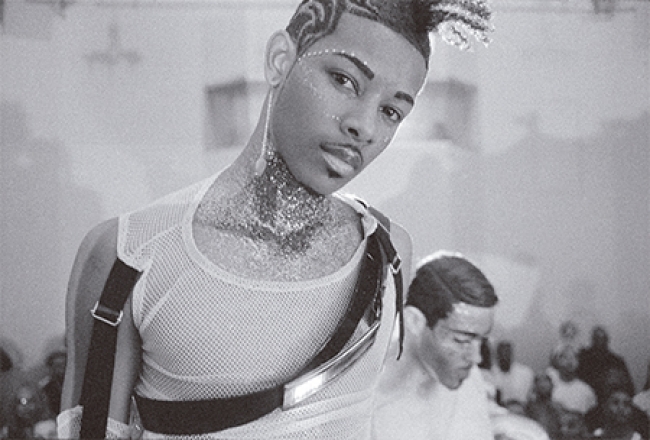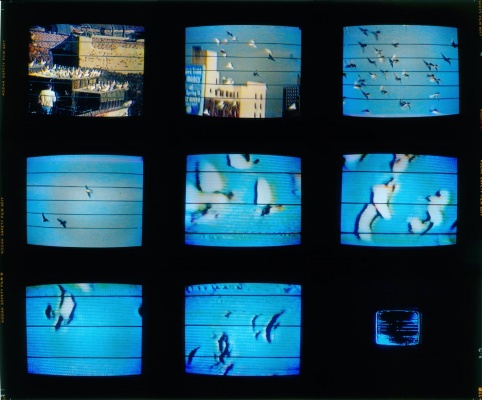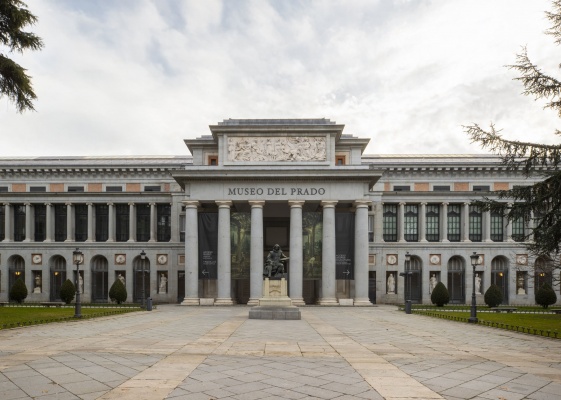Descripción de la Exposición
I.
It sits in the hand like a small weight. It folds itself in and over, willingly being contained while resisting structure as it falls through the fingers that attempt to accommodate it. It sways and bends with the gestures of the hand that holds it, spilling over and between as it moves and reacts. At once it pulls itself together and apart, both attracting and detracting as gravity and space push and pull.
The granules are cool to the touch. They hold moisture that acts as a binding agent that creates mass and density. Each grain is inevitably miniscule, its weight singularly insignificant. But how is insignificance defined if the collective weight and mass of a singular object culled together creates something bigger than one’s human vision can process?
The sand stretches as far as the horizon allows one to see. It is expansive in its clarity, a stark white that glitters and reflects with the rays of the sun that fall heavily upon it. A clear blue horizon floats lightly in its backdrop, creating the illusion of a perfect line that dips and bends according to the wave of small, mountainous dunes that rise and fall as accumulation responds to the whims and desires of the wind.
II.
I am standing on a cliff overlooking the North Sea. My eyes struggle to bring the horizon into focus. The atmosphere lies thick and heavy in front of me, blurring the clarity of gravity and causing a sense of vertigo that is exacerbated by the lack of definition between sea and sky.
They tell me that I am looking at the border between two countries. That in the distance, in the horizon that distinguishes neither up nor down, a border divides one from another. The only division I see is the humidity that sits like a blanket, rising from the sea as thick and heavy as the sea itself, and extending up into the heavens as though the two are one combined being of atmosphere and molecules. Collectively it creates a thick sheet that extends beyond vision, that discombobulates the senses, and turns ground and sky upside down.
Gravity does not exist here. The ground becomes sky, and the sky becomes sea, and the horizon an inequitable line that refuses definition.
III.
Graphite marks against the whiteness of the page curve and strike and make letters in consonants and vowels that form the words of a sentence. The rhythmic tension of implied sound fills the brain with implicated tone and builds a quiet cacophony of sentences that turn into a paragraph. Containing means recontaning as words spill over the page and fall into the next one, building and forcing an architecture of language, a dialect of expression.
The word is the grain, the sentence the solitary line of the horizon, the paragraph the mountain that climaxes to its peak and down again. Existence is the unacknowledged contradiction of the microcosmic creating the macrocosmic then the two reconstructing and rebuilding.
IV.
We sit together in darkness, a gesture counterintuitive to understanding the depth of space. We allow ourselves to lose the horizon, once again eliminating gravity. The paradigm of darkness begins to reflect the paradigm of viewing. The horizon becomes the darkness of space itself, its delineation a defiant and stubborn mass of ambiguous tenebrosity.
Our eyes begin to adjust simultaneously and darkness is no longer darkness, but a new way of seeing lightness. Two ways of looking and seeing that cannot exist without the other.
The grain of sand takes shape, bending and folding in and over itself. It forms the dunes that build and grow vertically, creating the contrast of line from which our eyes translate the distinction of a horizon, and from a distance the grain becomes the mountain.
_____________________________________________________________________________________________________________________________
About the artists
Daniela Libertad (Mexico City, 1983) Lives and works in Mexico City. Graduated from New York University ́s (NYU) Masters Program in Visual Art (2010) and the Escuela Nacional de Pintura, Escultura y Grabado “La Esmeralda” (2007). In addition she studied at the Staatliche Akademie der Bildenden Künste Karlsruhe in Germany (2006) with Professor Ernst Caramelle.
Using drawing, video, and photography, Libertad explores the diverse relationships between geometric forms, objects and her body, the perception of the intangible, mysticism and its connection to everyday life. Through her work, she investigates how sculptural dynamics are constructed and deposited onto objects; searching for a connection between weight, tension, and balance — materials, forms, and objects.
Her solo shows: esta línea va a tomar la forma de todo lo que devora. Fundación Casa Wabi Santa María la Ribera, Mexico City 2019; L d, Spaine línea. JosédelaFuente, Santander, Spain, 2017.Estudio sobre triángulo. The Museum of Human Achievement, Austin,TX, 2016. Empujo puertas que debería jalar, jalo puertas que debería empujar. Galería MARSO, Mexico City 2015; Estudio (trasladado). Cine Tonalá, Bogota, Colombia 2014; Alrededor, dentro. Casa Vecina, Mexico City 2014; Un cuerpo de luz, un punto de polvo. Galería MARSO, Mexico City 2013; Das volle leert sich, das leere fullt sich (lo lleno se vacía, lo vacío se llena) POLY Galerie, Karlsruhe, Germany 2013; Poste / Bolsa. Casa Vecina, Mexico City 2009.
danielalibertad.com
Fabiola Menchelli (Mexico City, 1983) Her work investigates the limits of photography through the language of abstraction. Using light as the raw material, the work seeks to explore essential ideas about photography in relation to other media. Her creation process questions the materiality of the image in order to explore photography as a poetic space.
Menchelli graduated from Massachusetts College of Art with a Masters in Fine Arts and holds a Bachelor of Arts in Computer Mediated Art from Victoria University in Melbourne, Australia. She has participated in several exhibitions in Mexico, the United States, Canada, England, Sweden, Australia, the United Arab Emirates and France. His most recent exhibitions include Blain Southern Gallery (London), PROXYCO Gallery (New York City), Paris Photo (Paris), Brett W. Schütz BWSMX Gallery (Mexico City) and Photo Dubai (Dubai). She has been invited to significant artist residences including Skowhegan School of Painting and Sculpture, Bemis Center for Contemporary Arts, Casa Wabi and more recently Casa Nano in Japan. She’s been awarded several honors including the FONCA Young Creators Grant, the Fulbright – García Robles Fellowship, the FONCA – CONACYT grant for studying abroad and the MassArt Dean’s Award for Fulbright Scholars. In 2014 she was awarded the Acquisition Prize for the XVI National Biennale of Photography from Centro de la Image Museum in México. She has taught visual arts and photography at Reed College (Portland, Oregon), the University of Cincinnati (Cincinnati, Ohio), the Academy of Visual Arts (Mexico City, Mexico), Universidad Centro: Design Film and Television (Mexico City, Mexico), the Adolfo Prieto School of the Arts Center (Monterrey, Mexico), at the Massachusetts College of Art and Design (Boston, Massachusetts) and at the Universidad Iberoamericana (Mexico City, Mexico).
About the curator
Leslie Moody Castro is an independent curator and writer whose practice is based on itinerancy and collaboration. She has produced, organized, and collaborated on projects in Mexico and the U.S. for more than a decade, and her repertoire of critical writing is also reflective of her commitment to place. She is committed to creating moments of artistic exchange and dialogue and as such is a co-founder of Unlisted Projects, an artist residency program in Austin, Texas. In 2017, she was selected as Curator and Artistic Director of the sixth edition of the Texas Biennial, and was recently the first invited curator in residence at the Galveston Artist Residency. Moody Castro earned a Master's degree at The University of Texas at Austin in Museum Education with a portfolio supplement in Museum Studies in 2010, and a Bachelor's degree in Art History at DePaul University in Chicago in 2004, and has been awarded two grants from the National Endowment of Arts for her curatorial projects (2016, 2017).

Actualidad, 13 nov de 2019
#loquehaquever en México: Vogue, CoBrA y José Dávila
Por PAULA ALONSO POZA
Seleccionamos una docena de muestras imprescindibles en el circuito expositivo mexicano. Destacan dos coproducciones internacionales: el MUCH acoge una monográfica del centro español CA2M sobre el voguing y el MAM colabora con ...

Exposición. 08 may de 2025 - 14 sep de 2025 / MNAC - Museu Nacional d'Art de Catalunya / Barcelona, España

Formación. 30 oct de 2025 - 11 jun de 2026 / Museo Nacional del Prado / Madrid, España